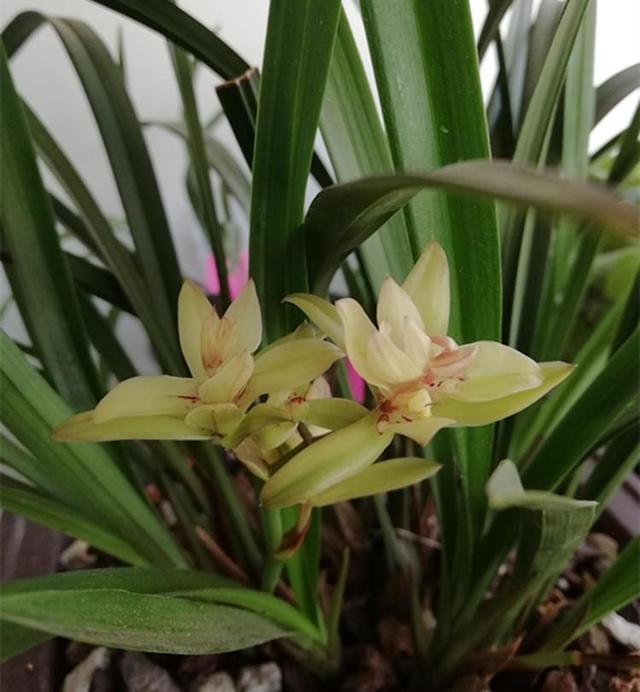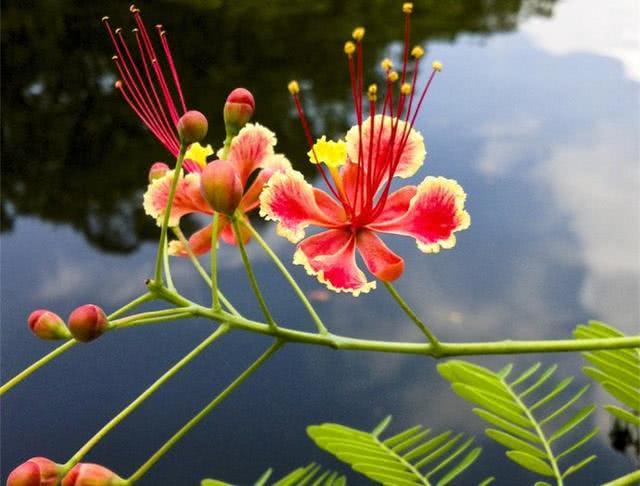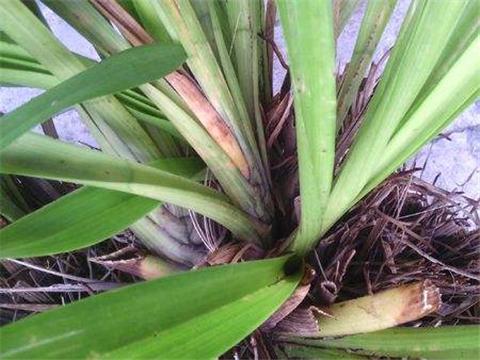The 20 key points of this orchid note are all key points.

In the practice of raising orchids, flower friends always encounter some problems and often do not know how to deal with them. Today, the editor will share with you some "notes" of the problems and experiences found by the old horticulturist raising orchids. There are 20 key points, all of which are key points.
1. In Sichuan and the south, orchid growers often use grain husks as plant material, but they must be completely rotten and disinfected, otherwise they are easy to get white silk disease and have high fertilizer efficiency. Ripe husks should also be added with an appropriate amount of river sand or other non-fertilizer plants.
If flower lovers use rotten grain husks as planting materials for orchids, they can add sun-dried pig shit, rotten leaves and river sand to mix them together. For most varieties of orchids, they may be fat, and only water white, cinnabar and a small number of clumps of spring swords can adapt.
2. Changing potted orchids must not bury the false bulbs completely in the soil. Otherwise, it is easy to rot the buds in summer. It is best to use some dried moss around the pseudobulb to keep more space.
3. Orchids can not be planted entirely with peat soil, because they are too fat, the roots are easy to blacken. It can be used together in a certain proportion. If the flower friends in the soil, but the orchid fertilizer is insufficient, it does not matter, the later stage of the orchid special organic liquid fertilizer can be used, generally once a week, diluted 500 times, the orchid growth is not a problem.
4. To buy orchids, you must choose two or three generations of mature or strong seedlings, do not buy old or weak seedlings, but pay more attention to sick seedlings. You should also pay attention to the root when buying seeds.
5, choose and buy orchid pots had better choose the same kind of orchid pots; there are too many kinds of orchids, orchids will encounter trouble in management in the future. For example, sandpot pots are easy to absorb water, but also easy to volatilize, clay pots have poor water absorption, plastic pots are not easy to absorb water and are not easy to volatilize, which is difficult to spray water and should be treated differently.
6. In summer, if the humidity in the air exceeds 80%, you should not spray water, otherwise the humidity will be too high and the buds will rot easily. Can be used to spray water around the orchid to improve the air humidity of the orchid maintenance environment, but also play a cooling role.
7. Autumn buds are prone to stiff buds, no leaves and no roots if the humidity in the basin is not enough.
8. Mastering humidity and watering "water" is an achievement of several years. Different seasons, different orchid pots, different bluegrass varieties, different plant materials, different plant sizes, different requirements for humidity should be treated differently.
9. The key to the so-called aeration and diuresis in the basin is the problem of planting materials. The plant material must be used with coarse particles, long fiber, soft plant material and hard plant material.
10. For the single seedlings of Cymbidium, Chunjian and Cymbidium, it is difficult for weak seedlings to survive above 35 ℃, and the mortality rate is extremely high.
11. Ink orchid and lotus petal orchid are exposed to strong light in summer, which is prone to black spots, scorched hemp leaves and, in serious cases, seedlings.
12. If the soil surface of the basin in summer and autumn is moist for a long time and the carapace of bluegrass is white, which is a sign of soft rot, the plant material at the base of bluegrass should be dispersed in time, the orchid pot should be put in a ventilated place to dry, and then spray medicine. Otherwise, soft rot will occur soon.
13. Where the mountain grass is trafficked over a long distance, the rotten roots of the feet must be trimmed. Otherwise, it may carry germs. Purchased bluegrass should be checked for disease first, and diseased grass can never be bought back.
14. For chimera grass, it is necessary to have more humidity and shade in summer and autumn, especially crystals, otherwise it is easy to scorch the dead leaves.
15. Bluegrass is daunting and often moves or replaces the orchid pot, which will affect the growth of bluegrass.
16. Bluegrass often turns pots to change soil, which is not conducive to growth. Experience has proved that it is more appropriate to change the basin once a year or once every two years.
17. Some bluegrass seedlings are not easy to turn over, so we can take the method of ramet in the original basin, that is, the orchid cluster will find the right branch of the conjoined body (also known as the road), and gently insert it with thin scissors to cut it off. After the original basin split, do not immediately watering, otherwise easy to infection.
18. When buying bluegrass in the market, except for a few traditional varieties that have obvious characteristics, you must look at the flowers, otherwise they are easy to be fooled.
19. In orchid cultivation, the withered and yellow old leaves and disease and insect leaves should be cut off continuously to facilitate ventilation. After the flower buds are unearthed, one flower bud should be left in each plant and the rest should be cut off so as not to consume too much nutrients and affect flowering in the coming year.
20. During orchid culture, ferrous sulfate can be applied at regular intervals to increase soil acidity. In addition, watering orchids with fermented rice water can also keep the upper soil in a slightly acidic state.
- Prev

Goldilocks flowers are like flying phoenixes, vivid and vivid, like a Phoenix flying.
Buttercup (one of the plants of the genus Euphorbia) (scientific name: Caesalpinia pulcherrima (L.) Sw.: large shrubs or small trees; up to 3 m tall, with green or pink-green branches, with sparse spines. Bipinnately compound leaves 4 to 8 pairs, yes.
- Next

The yellow leaves of Cymbidium teach you 4 ways to blossom beautifully and greatly.
In the process of maintenance, the leaves of Cymbidium will turn yellow, which will seriously affect the ornamental. The following editor introduces the causes and solutions of the yellowing of Cymbidium leaves. Let's go and have a look. The leaves of Cymbidium are yellowed.
Related
- Wuhan Hospital Iron Tree Blooming Result Was Instantly Frightened by the Gardener Master
- Which variety of camellia is the most fragrant and best? Which one do you like best?
- What is the small blue coat, the breeding methods and matters needing attention of the succulent plant
- Dormancy time and maintenance management of succulent plants during dormancy
- Minas succulent how to raise, Minas succulent plant pictures
- What are the varieties of winter succulent plants
- How to raise succulent plants in twelve rolls? let's take a look at some experience of breeding twelve rolls.
- Attention should be paid to water control for succulent plants during dormant period (winter and summer)
- Watering experience of twelve rolls of succulent plants
- Techniques for fertilizing succulent plants. An article will let you know how to fertilize succulent plants.

